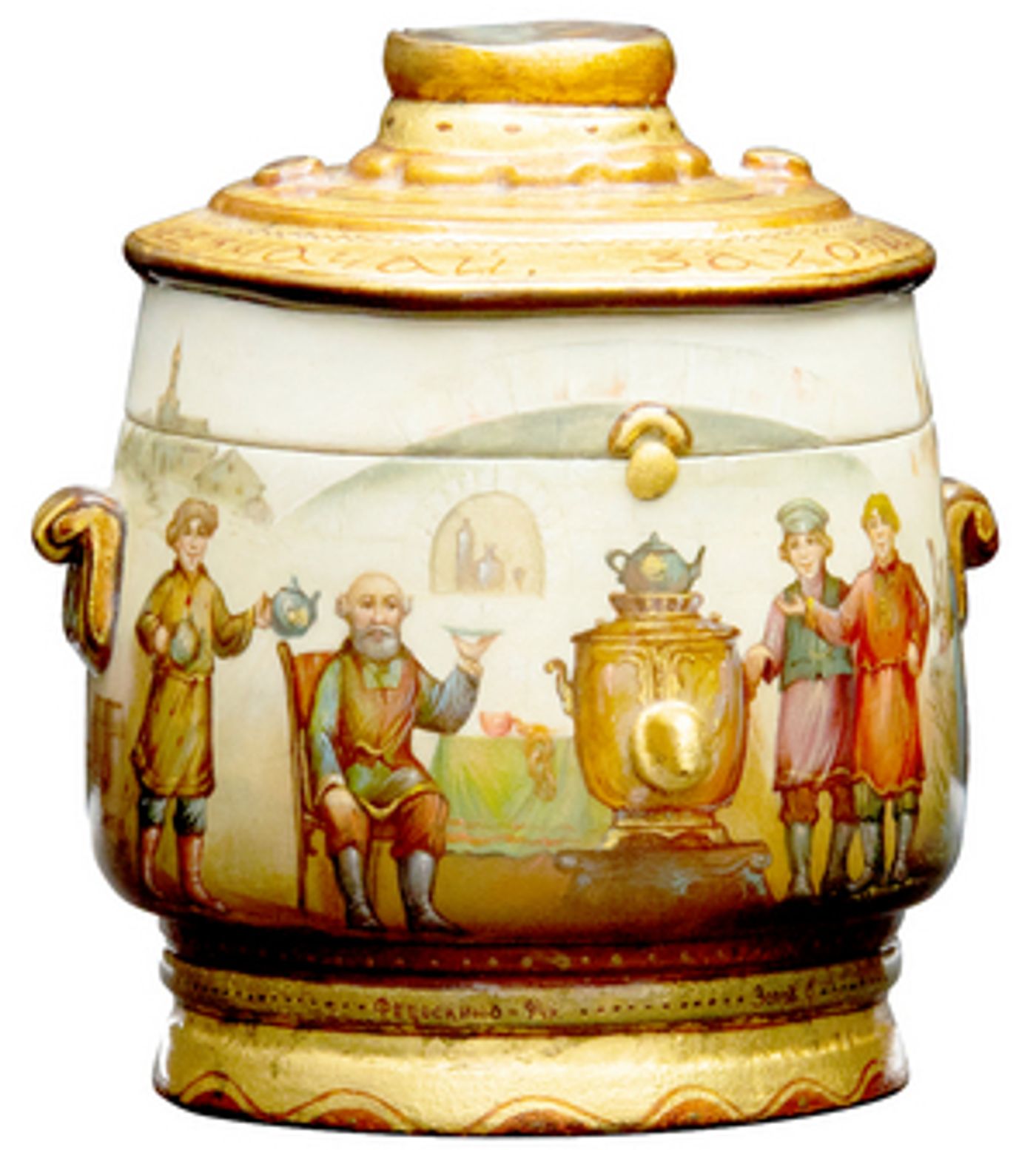Museum of Russian Icons to Present 'Tea is for Tradition'
The Museum of Russian Icons will present Tea is for Tradition, February 3 – October 2, 2022.

Cultivated in the southern parts of the Russian Empire, tea is emblematic of Russian culture, the samovar being the ubiquitous and stately anchor in any Russian home. The ceremony surrounding tea in Russia equals that of Japan in its cultural significance. But how did this ancient beverage come to hold such a place of prominence in Russia?
Imagine yourself on a cold winter's night, huddled around a table with friends, engrossed in discussions of tsarist politics and Anton Chekhov's newest short story. Throughout the meandering conversation, no one seems to notice the passing of time as the samovar on the table keeps the water warm, ready to add to the next teapot of zavarka (a strong tea-based concentrate widely used in Russia).
For Russians, tea is a fragrant, earthy beverage that comes with its own set of customs and rituals. While much of the history of tea drinking in Russia is little-known or romanticized, historians agree that Russians first encountered tea in the 1630s, when Tsar Michael I began the eastward expansion of the Russian Empire, establishing new territories and trade routes. Negotiations and diplomatic trading began between Russia and the eastern nations. Instead of the valuable furs he expected from the Mongolian Khan, Michael I received around 200 pounds of dried tea leaves as a gift. Although he initially had reservations about the usefulness of the beverage, widely consumed in China and Mongolia for centuries, the trade of tea eventually became so important that one of the world's longest and perhaps most harrowing trade routes was established for its importation--the Great Siberian Tea Road. By the 1800s, China was exporting over a million tons of tea to Moscow through Siberia, a testament to its cultural significance in Russia.
The objects associated with Russian tea are tactile reminders of this important tradition and evoke warmth, home, and family. Much of tea's popularity is owed to Russia's literary greats and decorative artists, for it is in their craft that tea becomes immortalized as a central aspect of the Russian identity.
By the nineteenth century, references to tea drinking could be found in literary works worldwide, often signaling an intimate or essential moment in the story. In Russia, the samovar made frequent appearances in poems and short stories, and as the Russian people consumed the words on the page, tea's fashionable reputation increased.
Two of Russia's most influential authors, Alexander Pushkin and Fyodor Dostoevsky, established the ritual of tea drinking as integral to Russian social and home life and even to national identity. At the same time, the Arts and Crafts movement took notice of the drink's popularity. Whimsical wooden dolls doubled as tea caddies, and decorative lacquer boxes featured figures sitting around a samovar or a family enjoying a festive celebration, with tea at the center of it all.
"Tea awakens those opportunities that dream deep inside my soul." wrote Leo Tolstoy.
EXHIBITIONS CURRENTLY ON VIEW
Icons for Our Time: Orthodox Art from Around the World
Through April 3, 2022
Icons for Our Time, guest curated by Dr. Clemena Antonova, celebrates the fifteenth anniversary of the Museum's founding with an exhibition of fifteen icons by some of the most important contemporary icon painters from around the globe. New works by artists from Armenia, Belarus, Bulgaria, Cyprus, Egypt, Georgia, Greece, Japan, Montenegro, Russia, Serbia, the UK and the US have been specially commissioned for this anniversary exhibition. In addition to engaging audiences visually, the exhibition offers a multi-sensory experience for visitors to explore the icon tradition in a recreated sacred space unique to each icon's country of origin.
Visit the website, www.museumofrussianicons.org.
Videos

